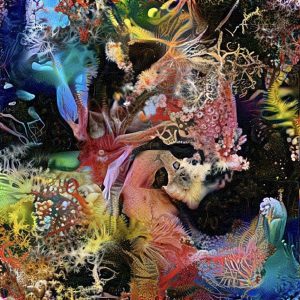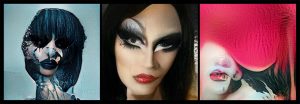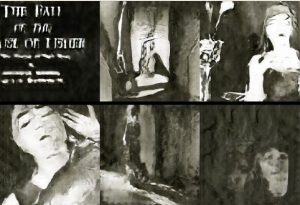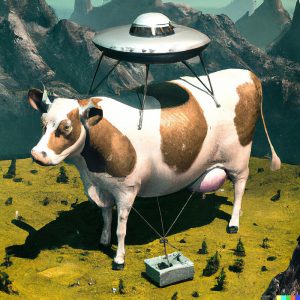Saptarshi Ghosh
Machine learning (ML) is a branch of artificial intelligence (AI), which allows computers to learn from experience rather than being programmed. It has contributed to the development of a loosely-defined field of arts wherein artists use various AI algorithms to magically conjure up images hitherto unconceived of and unimagined.
DALL.E 2, Stable Diffusion, Dream Studio, Deep Dream and Style Transfer are some AI image generators available currently. All you need to do is provide a prompt and lo and behold, the image gets generated right away out of thin air! AI algorithms can generate new images based on a set of parameters or by modifying or combining existing ones.

Deep learning, a recent revolutionary breakthrough in ML, is responsible for much of the remarkable feats performed by the AI image generators of today. It involves “using several interconnected layers of artificial neurons to represent and interpret patterns present in huge quantities of data”. Deep learning also has applications in self-driving vehicles, automated medical diagnosis, making financial predictions and so on.
What does the artistic process look like?
Lying on the fringes of the art world, the reception of ML art and ML artists is hardly favourable. Many assume that creating ML art involves simply pushing a button, which is far from the truth.
ML artists wear the hats of both a computer programmer and an artist. The first step to creating ML art is researching on the various AI image-generating models available and picking the best-suited one. This is a very challenging process since artists have to rigorously study the technical aspects of different algorithms. Many write their own algorithms while some modify existing ones to achieve the desired outcome.
The next step involves training the algorithm with a suitable training dataset, made up of multiple images. According to the provided prompt, it then generates a batch of images from which the artist selects the suitable one. Thus, it is more appropriate to call these images ‘co-creations’ since the process requires the participation of both human and machine.
A single prompt never does the job. There has to be prolonged interaction between the algorithm and the human artist: as Kevin Kelly points out, “Progress for each image comes from many, many iterations, back-and-forths, detours, and hours, sometimes days, of teamwork—all on the back of years of advancements in machine learning.”

Courtesy: jakeelwes.com
ML art is a difficult terrain to navigate. Jake Elwes, an ML artist, elaborates, “[If you are a painter] you have a canvas, a physical limitation or constraint within which you can just experiment. You can do a bad painting. […] I can’t just make a bad painting. First, I have to have the concepts, and then do a lot of research. I’m slightly envious of my friends working with more analogue materials who can just play in their studio.”
Is ‘ML art’ art at all?
Say you type in a prompt and the image generator furnishes a result – is this image art?
Anna Ridler, an artist and researcher working with AI, makes the crucial distinction between art and what she calls “tech demos”. She feels that much of what passes off as ‘AI art’ today are “tech demos”, which use technology to simply create something pretty. For something to be considered art, there must be some artistic intention. Moreover, any artwork must be anchored to its real-world context. Though endlessly creative, image-generating algorithms not only lack artistic intention but are also unable to contextualise the images they produce.

Courtesy: www.annaridler.com
Such parameters can only be fulfilled by a human artist working with AI. Therefore, one should rather envision ML as a tool for creating art. As Ridler explains, ML is “a tool that people are using in their practice that fits into existing strands of art history”.
Even though it may be cutting edge, with ML, the relationship between the artist and their media remains unchanged. This is because ML artists ultimately address human concerns instead of technical ones.
Commodification of creativity
Image-generating algorithms demonstrate that creativity is not a trait unique to human beings, like intelligence, but can be synthesised artificially. Intelligence thus is no longer a precursor to being creative.
The AI image generators exhibit ‘synthetic creativity’ – one that can never cease to keep surprising us with unexpected results. Such relentless creativity can obviously be commodified. However, synthetic creativity cannot supplant human creativity. You cannot possibly expect AI to achieve marvels akin to the discovery of the DNA, the creation of the Mona Lisa or the composition of a poem like The Waste Land!

Courtesy: Wikipedia
Will human artists become obsolete?
With creativity turning into a commodity that can be summoned at will, does ML art spell the doom for human artists?
This is unlikely to happen. Introduction of any radical new technology has always ushered in fears of certain activities or professions turning obsolete. When photography came into existence in the 19th century, people raised alarms that it meant the end of painting. Similarly, with the invention of cinema, people feared photographers would be out of business. But as history has shown us, this is hardly the case.
As we have seen, it is best to view AI as partners or collaborators. They are tools that need human participation to function. So, be assured that there won’t be any instances of rogue AI taking over the planet!
Also, whenever a new technology emerges, it tries to emulate previously existing ones. In the initial days of photography, practitioners tried to make their photographs look like paintings. However, such crude imitations did not qualify as art. Similarly, many people working with image-generating algorithms attempt to imitate the style of painters. You may ask Style Transfer to create a painting in the style of van Gogh. But it will be nothing more than a mere imitation.
What does the future look like?
Jensen Huang, co-founder of the American technology company NVIDIA, believes that with cutting-edge advancements being made in ML, new generations of chips will be able to conjure up entire 3D worlds for the metaverse. In fact, in September 2022, three novel text-to-3D/video image generators were already announced.
Thus, it won’t be very far in the future when we might be able to create 3D videos and images with the help of prompts. The future definitely looks promising!
Bibliography:
- Anne Ploin, Rebecca Eynon, Isis Hjorth, Michael A. Osborne, ‘AI and the Arts: How Machine Learning Is Changing Artistic Work’, University of Oxford, 2021.
- Sofian Audry, Art in the Age of Machine Learning, MIT Press, 2021.
- https://www.wired.com/story/picture-limitless-creativity-ai-image-generators/
- https://www.v7labs.com/blog/ai-generated-art





